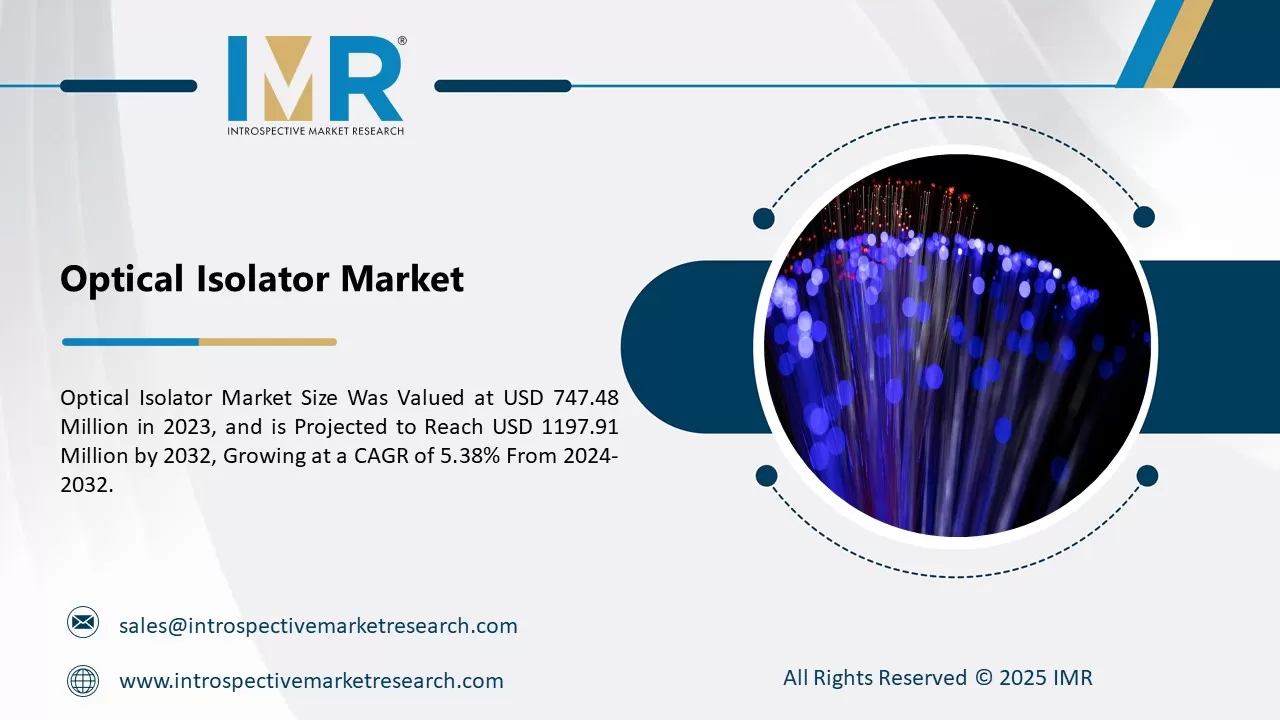Global Motorcycle Antilock Braking System (Abs) Market
According to a new report published by Introspective Market Research, titled, ?Motorcycle Antilock Braking System (Abs) Market by Type, Motorcycle type, Component, Technology, Distribution Channel and End-user: Global Opportunity Analysis and Industry Forecast, 2024?2032,?
Global Motorcycle Antilock Braking System (ABS) Market size is expected to grow from USD 21.34 Billion in 2023 to USD 52.41 Billion by 2032, at a CAGR of 10.5% during the forecast period (2024-2032).
A Motorcycle Antilock Braking System (ABS) prevents wheel lock-up during braking, enhancing rider safety by maintaining traction and control. It uses sensors and a controller to monitor wheel speed and modulate brake pressure. The Motorcycle ABS market is growing due to rising safety concerns, stricter regulations, and increasing motorcycle sales globally. Technological advancements and the adoption of ABS in lower-capacity bikes further drive market expansion. Major players include Bosch, Continental AG, and Honda Motor Co., Ltd., focusing on innovative and cost-effective solutions to meet diverse market needs.
The Motorcycle Antilock Braking System (ABS) Market is segmented into Type, Motorcycle type, Component, Technology, Distribution Channel, End-user, and region. By Type, the market is categorized as Large Displacement and Small Displacement. By Motorcycle type, the market is categorized into Sport Bikes, Touring Bikes, Off-road Motorcycles and Cruisers. By Component, the market is categorized into Sensors, Electronic Control Units, and Hydraulic Units. By Technology, the market is categorized into Single Channel ABS and Dual Channel ABS. By Distribution Channel, the market is categorized into Online Retail and Offline Retail. By End-Users, the market is categorized into OEM and Aftermarket. By region, it is analyzed across North America (U.S.; Canada; Mexico), Eastern Europe (Bulgaria; The Czech Republic; Hungary; Poland; Romania; Rest of Eastern Europe), Western Europe (Germany; UK; France; Netherlands; Italy; Russia; Spain; Rest of Western Europe), Asia-Pacific (China; India; Japan; Southeast Asia, etc.), South America (Brazil; Argentina, etc.), Middle East & Africa (Saudi Arabia; South Africa, etc.).
The Motorcycle Antilock Braking System (ABS) market is experiencing significant growth, largely driven by heightened safety awareness among riders. ABS technology plays a crucial role in preventing wheel lock-up during braking, thereby ensuring optimal traction and stability. This focus on safety has elevated ABS from a luxury feature to a fundamental component within the motorcycle industry.
Consumer preference for advanced safety features is a key driver of this market's expansion. As riders become more conscious of their safety and the technological capabilities of their vehicles, the demand for motorcycles equipped with ABS has surged. Modern consumers prioritize safety enhancements and are increasingly seeking motorcycles with advanced braking systems to improve their riding experience.
Global Motorcycle Antilock Braking System (Abs) Market, Segmentation
The Motorcycle Antilock Braking System (Abs) market is segmented based on Type, Motorcycle type, Component, Technology, Distribution Channel and End-user and Region.
Type:
Larger displacement motorcycles are often synonymous with high performance, attracting enthusiasts who seek power and advanced features. These motorcycles are preferred for long-distance touring, cruising, and sports riding, driving significant demand in the market. The Large Displacement segment is closely associated with premium and luxury categories, where riders are willing to invest in the latest technology and exceptional performance.
Component:
The sensors segment is anticipated to lead the Motorcycle Anti-lock Braking System (ABS) market. This dominance is attributed to the critical role sensors play in enhancing safety and performance by providing real-time data on wheel speed and braking force. Their ability to accurately monitor and adjust braking dynamics ensures effective prevention of wheel lock-up and skidding, thereby significantly improving rider safety and control. As a result, demand for advanced sensor technologies within ABS systems is expected to drive market growth.
Region:
The Asia Pacific region is anticipated to lead the Motorcycle Antilock Braking System (ABS) market, driven by rising disposable incomes, rapid urbanization, and a burgeoning middle class. This region's pivotal role in the global motorcycle industry is evident as countries such as India, China, and various Southeast Asian nations experience a surge in motorcycle sales. This growth is fueled by the increasing need for affordable and efficient transportation solutions amidst urban expansion. As the motorcycle market continues to expand, the demand for advanced safety features like ABS is on the rise, reflecting a heightened awareness of rider safety and a growing emphasis on enhancing overall road safety standards.
Some of the leading Motorcycle Antilock Braking System (Abs) market players are
- Knorr-Bremse (Germany)
- ZF Friedrichshafen (Germany)
- BMW (Germany)
- NXP (Netherlands)
- Honda (Japan)
- Aisin Corporation (Japan)
- Hitachi (Japan)
- Johnson Electric Group (China), and Other Active Players.
Key Industry Developments in the Motorcycle Antilock Braking System (ABS) Market:
- In October 2023, Hitachi Astemo, Ltd. will participate in EICMA 2023, a major global motorcycle exhibition in Milan, Italy, from November 7?12. The company will showcase diverse technologies and products, focusing on ADAS and EVs, to innovate motorcycles for carbon neutrality and enhanced comfort.
- In August 2023, Bosch, a global leader in technology and engineering solutions, proudly announces its groundbreaking range of modular Motorcycle Stability Control (MSC) solutions. These cutting-edge systems, tailored to diverse application needs, combine Advanced Braking Systems (ABS) with state-of-the-art Inertial Measurement Units (IMU) for unprecedented performance and safety.
Key Findings of the Study / Key Industry Developments.
- The Motorcycle Antilock Braking System (ABS) Market size is expected to grow from USD 21.34 Billion in 2023 to USD 52.41 Billion by 2032, at a CAGR of 10.5% during the forecast period (2024-2032).
- Larger displacement motorcycles are associated with higher-performance machines, appealing to motorcycle enthusiasts who prioritize power and advanced features. These motorcycles are favored for long-distance touring, cruising, and sports riding, contributing to a robust market demand.





